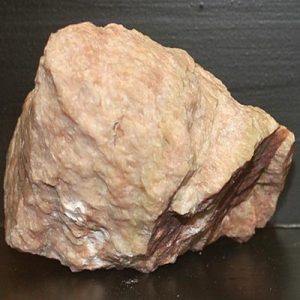Alunite
Alunite, additionally called Alum stone, is a source of the chemical known as an alum and is a mineral that is rock-forming. Alunite varies in colour from white to yellow-gray. Alunite forms from the action of sulfuric acids upon potassium feldspars that are rich a procedure called “alunitization”. It is insoluble in water or weak acids, but soluble in sulfuric acid. Alunite can certainly be mistaken for Dolomite and Calcite.
Sources of Alunite are Marysvale, Utah; Red Mountain, Custer County, Colorado; Goldfield district, Nevada, USA; and Tolfa, Italy.
| Chemical Formula: | KAl3(SO4)2(OH)6 |
| Potassium Aluminum Sulfate Hydroxide | |
| Molecular Weight: | 414.21 gm |
| Composition: | Potassium | 9.44 % | K | 11.37 % | K2O |
| Aluminum | 19.54 % | Al | 36.92 % | Al2O3 | |
| Hydrogen | 1.46 % | H | 13.05 % | H2O | |
| Sulfur | 15.48 % | S | 38.66 % | SO3 | |
| Oxygen | 54.08 % | O | |||
| 100.00 % | 100.00 % | = TOTAL OXIDE |
| Crystallography: | Trigonal |
| Crystal Habit: | Crystals typically pseudocubic or tabular with flat vicinal rhombohedra, to 1 cm; fibrous to columnar, porcelaneous, commonly granular to dense massive. |
| Twinning: | None |
| Cleavage: | Perfect on [0001] |
| Fracture: | Conchoidal to Uneven |
| Tenacity: | Brittle |
| Moh’s Hardness: | 3.5 – 4.0 |
| Density: | 2.60 – 2.90 (g/cm3) |
| Luminescence: | None |
| Radioactivity: | Barely Detectable; GRapi = 136.78 (Gamma Ray American Petroleum Institute Units) |
| Other: | Insoluble in water. |
| Colour: | Colorless if pure; may be White, pale shades of Gray, Yellow, Red, to Reddish Brown from impurities. |
| Transparency: | Opaque, Translucent, Transparent on thin edges |
| Lustre: | Vitreous; somewhat Pearly on [0001] |
| Refractive Index: | 1.572 – 1.592 Uniaxial ( + ) |
| Birefringence: | 0.0020 |
| Dispersion: | None |
| Pleochroism: | None |
| Other: |
Strongly pyroelectric |


